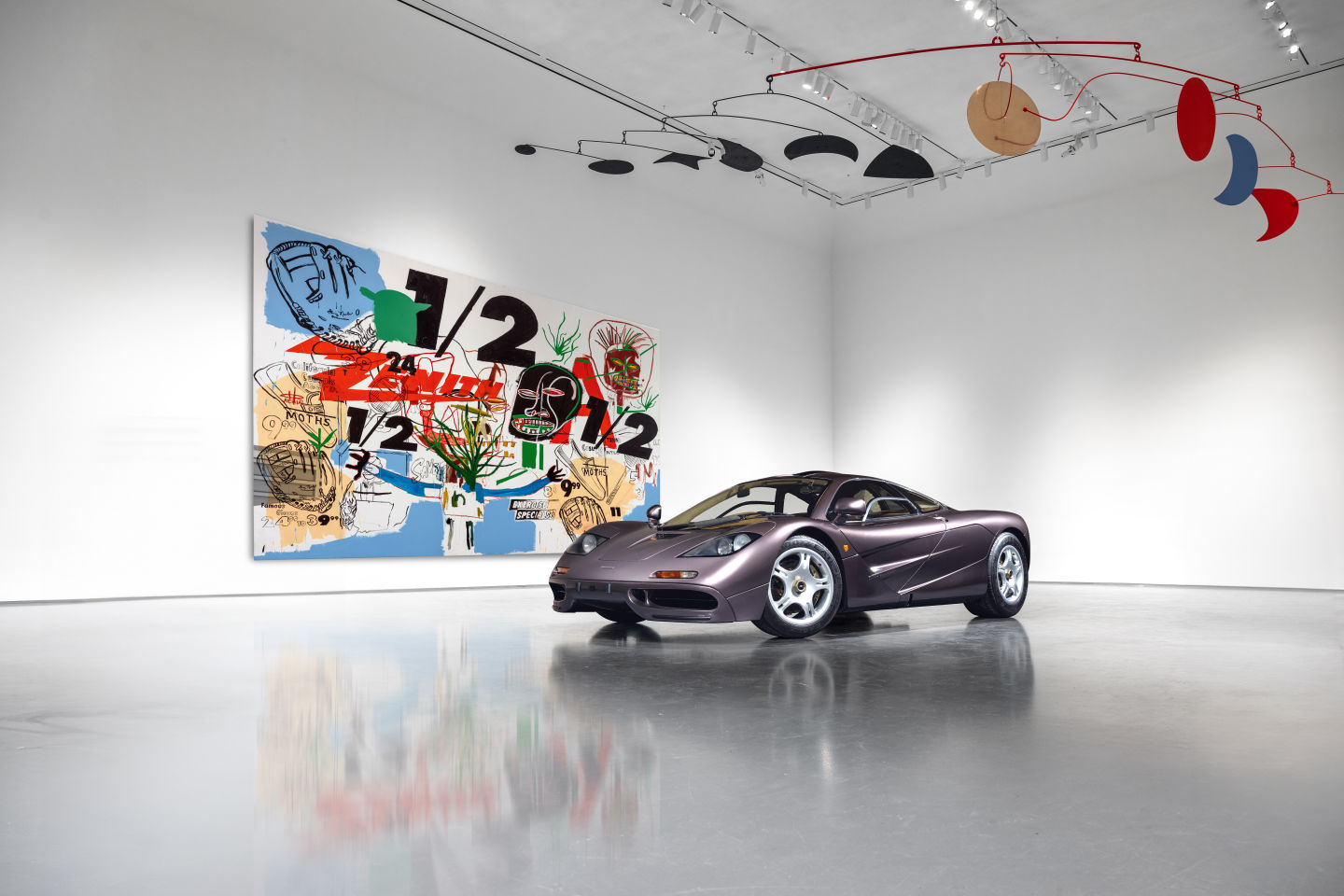This 254-mile McLaren F1 could sell for over £20million
McLaren F1s don’t come up for sale very often. They’re hot property for so many reasons: they’re rare, celebrated as one of the greatest motorcars of all time, and they’re just about the definition of a blue-chip collector car in 2024.
They don’t transact these days for anything less than £10million. So this one, with just 254 miles on its odometer from new, that became the highest-priced McLaren F1 ever sold when it last came up for grabs in 2021, must have the potential to double that.
Chassis 029 has more than time capsule status to its credit. For a start, it’s presented in a unique colour way. Creighton Brown is named directly after the legendary joint owner of McLaren International, who joined the team with Ron Dennis back in the early 1980s and who was instrumental in the creation of McLaren Cars and the F1.
The car was originally delivered in Japan and comes complete with what is described as an ‘unbroken chain of provenance from new’. That means service records, ownership history and more. As you’d expect for a car that’s seen so little use, all the usual F1 accoutrement is present and correct, including the fitted luggage to match the Light Tan and Brazilian Brown cabin, FACOM tool chest and even the TAG Heuer watch.
We understand that every vehicle is unique, which is why our Agreed Valuation policies take the true value of your classic car into account.
Indeed, it is the mileage that is the huge draw that makes this F1 a real unicorn, with the last owner having covered just 14 miles in the three years since purchasing it. Now, it could be yours, when it hits the Sotheby’s Sealed auction block on 13th May. But with talk of a softening market for all collector cars and the comparative peak this car sold at last, will this F1 manage to surpass its 2021 sale price of $20,465,000? We’ll be excited to find out.
This car is up for sale with RM Sotheby’s Sealed.
Get an online quote in minutes or call us
Monday to Friday from 09:00 - 19:00
Saturday from 09:00 - 14:00
Sunday from 10:00 - 14:00
or Arrange a call back.
Get an Online Quote Now
Arrange a Call Back
win a year's car insurance
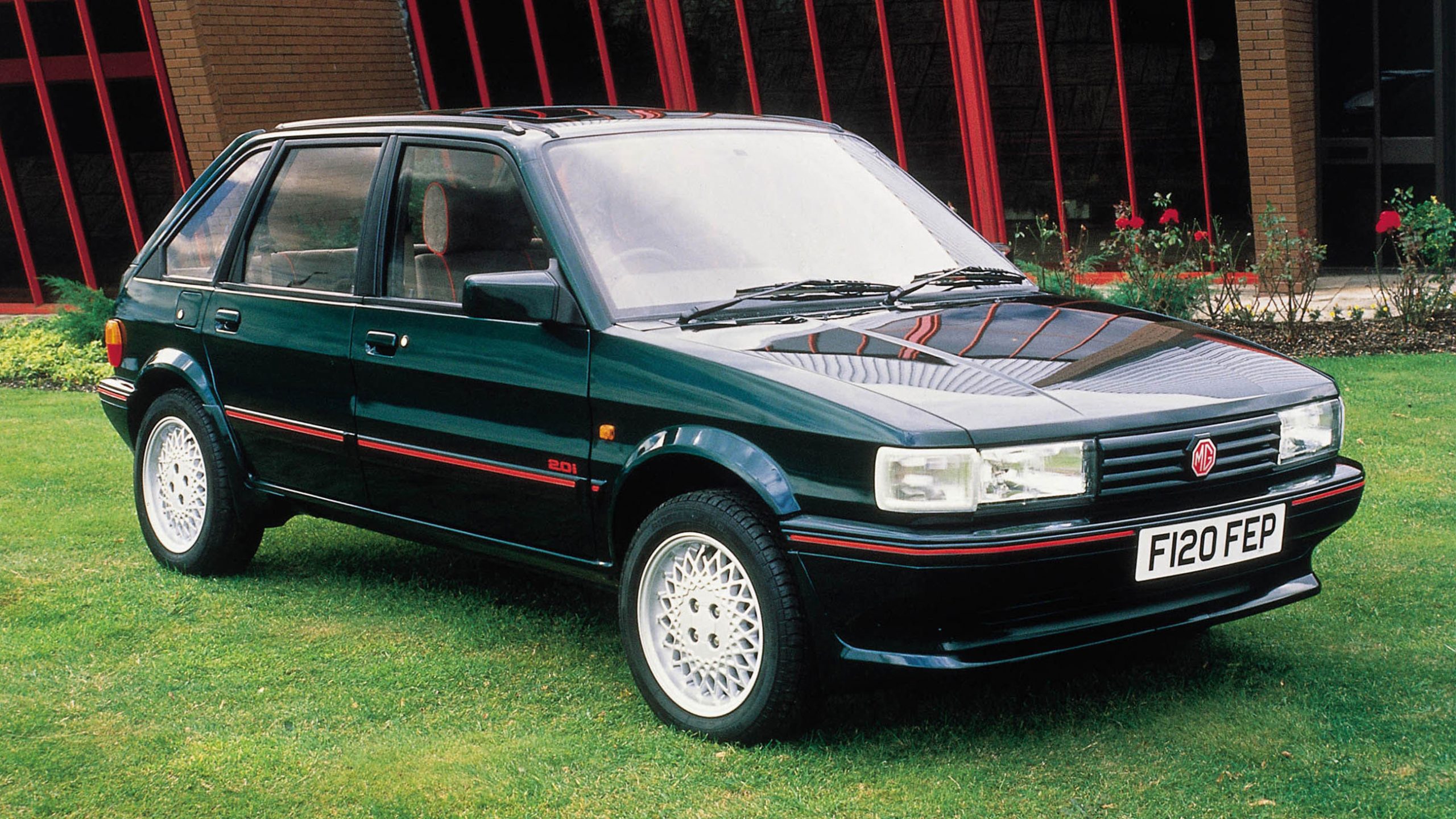
Austin Maestro | Cars that were ahead of their time
Austin Maestro | Cars that were ahead of their time
A massive buzzword at the moment in the realms of tech is Artificial Intelligence or AI and as is always the case with these things, it’s bleeding into the automotive world.
We can count a number of cars released or updated this year with ChatGPT baked in, allowing you to have a semi-casual conversation with your own car. Of course, voice controls have been in cars for a while, going back to the early 2000s and those early Mercedes systems.
But would you believe us if we told you that cars capable of uttering spoken words can trace their lineage some 20 years further back… to British Leyland? No? Well, believe it.
Doing its best KITT impression all the way back in 1983 was the Austin Maestro, in Vanden Plas and MG trim, which actually featured a number of interesting innovations. Among the laminated windscreen, electronic engine management system and digital speedo was of course, the voice synthesis warning and information system.
Didn’t put your seatbelt on? The Maestro would quite literally ‘tell’ you. Likewise if you’d turned the engine off and left the lights on, or if the oil or coolant needed topping up – a shoo-in for a BL car, surely…
It’d also warn you of low-ambient temperatures and to watch out for ice, or that your brake pads needed to be checked, or if the door was open, or… you get the idea. You could also prompt it to tell you things, like what the time was, your trip distance, or the amount of fuel you’d used (for that journey or what your average was).
The voice was a real person, too; a New Zealand actress by the name of Nicolette McKenzie, who in addition to giving the Maestro a voice, has starred in Under Suspicion and The Merchant of Venice, to the 2017 PlayStation 4 game Horizon Zero Dawn. Now there’s some association game gold.
We understand that every vehicle is unique, which is why our Agreed Valuation policies take the true value of your classic car into account.
No, you couldn’t talk to it, which is the direction all voice systems in cars took as they became popular over the past 20 years but truthfully and honestly, the Maestro’s voice system really is the long-lost progenitor for the ChatGPT integration in your new Volkswagen Golf.
At the time the Maestro was actually received strangely well for a British Leyland product, slightly fusty styling notwithstanding. It was practical and of course festooned with gimmickry. But it’s of how the car held up post-delivery, as with much of what Leyland produced, that let it down. The digital dash plagued the car with electrical issues and the engines had baked-in problems. The Maestro famously took six years to develop, yet was somehow still rushed.
Of course, the voice system is as much a gimmick now as it was then, and the important bits – how a car is actually put together and how dependable it is – are as much a reason the Golf is well into its eighth generation as they are a reason British Leyland, Austin and the Maestro, are automotive footnotes. All the same, the novelty of the Maestro and its trinkets fascinate still, some 40 years on.
Get an online quote in minutes or call us
Monday to Friday from 09:00 - 19:00
Saturday from 09:00 - 14:00
Sunday from 10:00 - 14:00
or Arrange a call back.
Get an Online Quote Now
Arrange a Call Back
win a year's car insurance
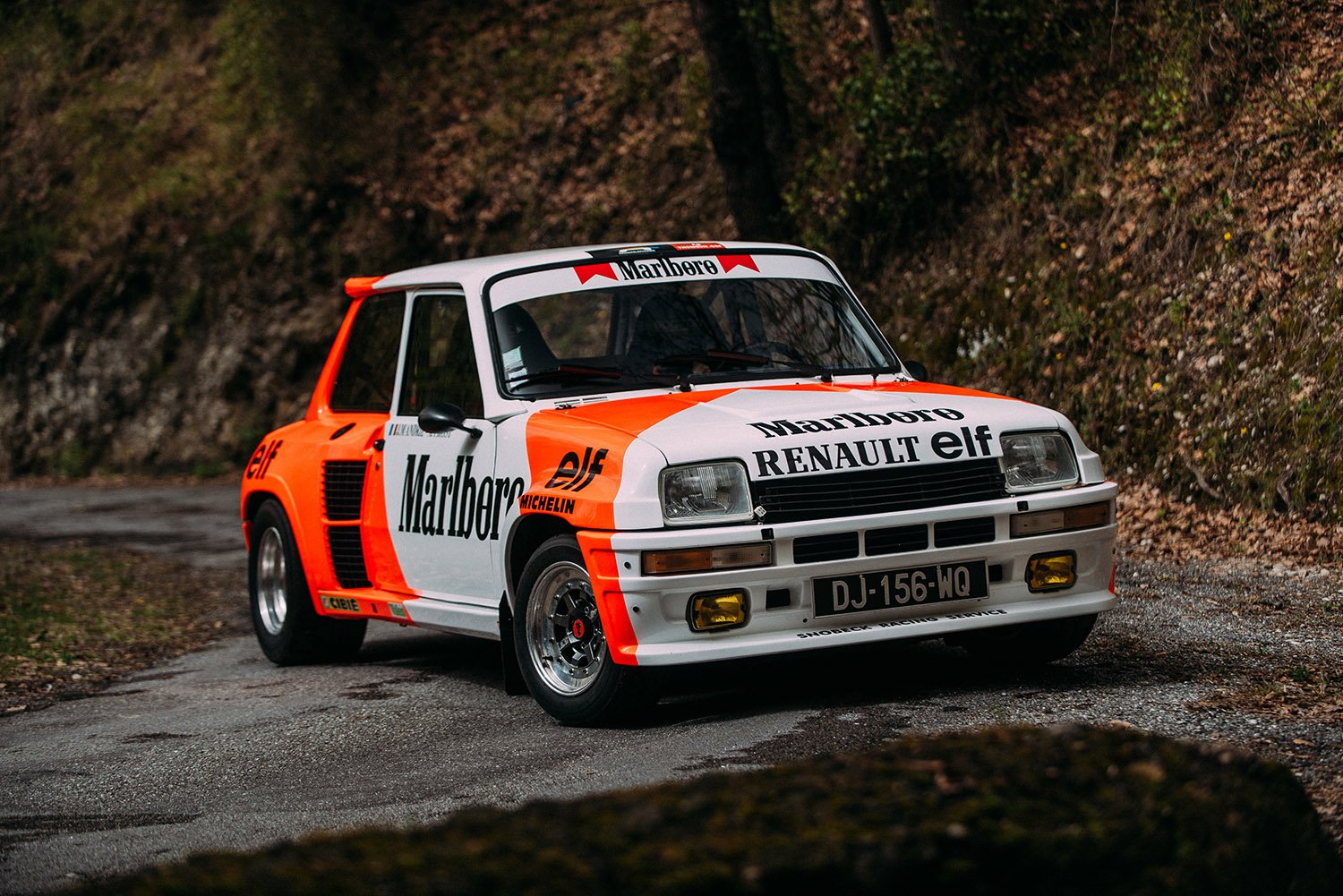
Alain Prost’s 1982 Renault 5 rally car is up for sale
Alain Prost’s 1982 Renault 5 rally car is up for sale
The discussion about the coolest rally cars ever made is one that simply has to include the Renault 5 Turbo. Specifically this one, built in 1982 and entered by Alain Prost into that year’s Rallye du Var.
Already an established Formula 1 driver with five grand prix victories to his name, by October 1982 Prost was a household name, and yet in his off-season, he chose to compete in a round of the French Rally Championship.
He was of course driving a French car, but due to sponsorship agreements, his Renault 5 Turbo was painted in the Marlboro livery, which makes this quite possibly the coolest 5 on the planet.
Prost, supported by his co-driver Jean-Marc Andri, managed a seventh-place finish on his opening stage but eventually retired from the event. It would prove to be his final rallying experience as F1 team bosses soon began to veto such possibilities.
The car continued to race in the wake of Prost’s efforts, competing in 28 rallies between 1983 and 1988, winning on two occasions and taking a further 12 podiums.
We understand that every vehicle is unique, which is why our Agreed Valuation policies take the true value of your classic car into account.
It did undergo a substantial rebuild following an accident which necessitated a whole new body and chassis, but a restoration by a previous owner returned it to its original Marlboro-liveried glory. As Group 4 rally cars go, this one is really quite special.
If you have a quarter of million euros spare on the 11th May, we suspect the temptation to add this to your collection might be difficult to ignore.
This car is up for sale at the RM Sotheby’s Monaco sale.
Get an online quote in minutes or call us
Monday to Friday from 09:00 - 19:00
Saturday from 09:00 - 14:00
Sunday from 10:00 - 14:00
or Arrange a call back.
Get an Online Quote Now
Arrange a Call Back
win a year's car insurance
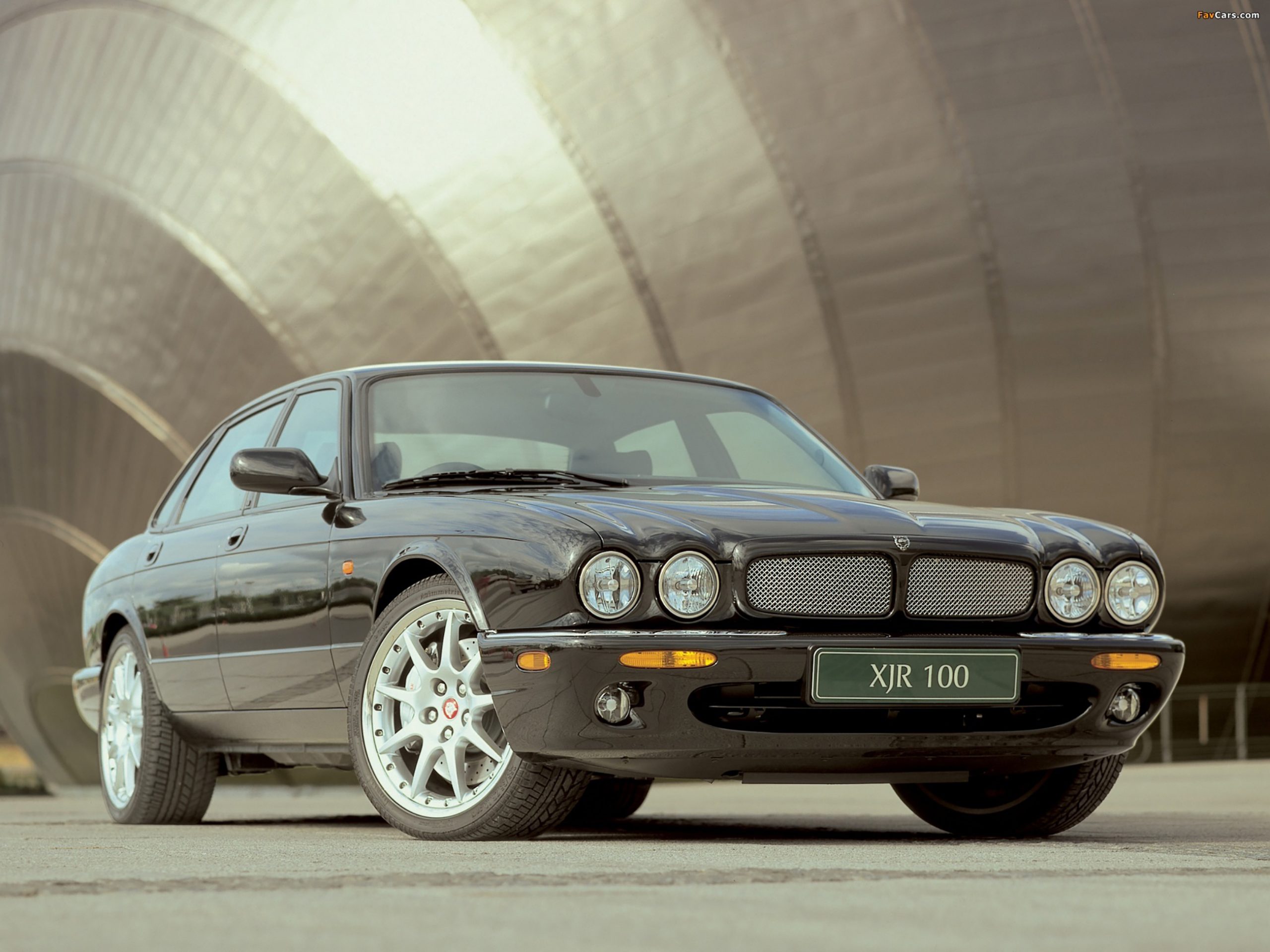
X308 Jaguar XJR | Alternative Classics
X308 Jaguar XJR | Alternative Classics
If you’re on the hunt for a modern-classic sports saloon, but you’re not interested in going for the obvious choice that is E39 BMW M5, there are plenty of other considerations you can make, including this: the X308 Jaguar XJR.
Launched in 1997, the X308 XJR didn’t just have the BMW to worry about, it also had to deal with the W210 Mercedes E55 and later the all-wheel-drive C5 Audi RS6.
But while its rivals focussed on providing Teutonic performance, the XJR was arguably the better motor vehicle for everyday living, courtesy of its butter-smooth ride and the easy, big-lunged performance of its supercharged V8.
While the X308 looks almost identical to the six-cylinder X300 it replaced, the car’s interior made vast leaps both in terms of quality and design, but also practicality, with a usable back seat and a boot that isn’t pitifully small. Having said that, you still get the old-world charm you would expect of a Jag, with leather and thick slabs of wood coming at you from every angle.
It was replaced by the X350 in 2004, but the earlier car’s sleeker looks – much more in keeping with the brand – make it the more desirable of the two, yet it kept the old-school charm absent from the now-defunct X351.
X308 Jaguar XJR: why buy one?
While it’s easy to understand why performance car fans looking for something practical were whipped into a frenzy by the arrival of the E39 BMW M5 – with its naturally aspirated V8 and superb chassis – it does mean the X308 Jaguar XJR tends to be overlooked.
It shouldn’t be. What the XJR lacked in headline numbers and rapid lap time figures, it more than made up for with its generous portion of everyday usability.
Its 4.0-litre V8 was key to this. Thanks to the important addition of a supercharger the XJR had low down grunt – 525Nm (387lb ft) from 3,600rpm – that made short work of problematic overtakes. It wasn’t slow on paper, either, 0-62mph took 5.6 seconds on the way to a 155mph top speed.
We understand that every vehicle is unique, which is why our Agreed Valuation policies take the true value of your classic car into account.
But while the Jaguar could happily chew through country roads at pace, it was equally comfortable pampering you with its oily smooth ride and light steering.
This more relaxed manner could explain why the XJR isn’t the most popular of used sports saloons – buyers of these types of cars want real-deal drivers’ machines. But, their loss could be your gain because it means usable XJRs can be found for less than £5,000.
X308 Jaguar XJR: what to look out for?
Unfortunately, if you’re running an old and complex car like the XJR for any length of time, you’re likely to encounter problems.
One of the most common on the XJR is failed timing chain tensioners (Jaguar, in its infinite wisdom, made them from plastic) that could cause the valve gear to ‘lunch’ itself if not caught. The tensioners were upgraded for part-metal items in 2001, which were later swapped out again for tensioners made entirely from metal.
Pre-2000 X308s can also suffer from failed water pumps and bore liner wear – both of which can cause total engine failure. Like any heavy saloon, XJRs can also chew through brake and suspension components so it’s worth checking both are tip-top.
Unlike its aluminium-bodied replacement, the steel-bodied X308 can suffer from rust. Problem areas include the wheel arches and the bottom of the rear windscreen, but it’s worth carefully inspecting the entire body. Sagging headliners are the bane of the interior, so check the mole-fur material is stuck down as it should be.
X308 Jaguar XJR: how much to pay?
One of the XJR’s most attractive features is its price – while you’ll pay £15,000 for a shabby BMW E39 M5, you’ll need less than a third of that to get your hands on the cheapest X308 XJR. Expect such a machine to suffer from corrosion on the outside, a noisy engine and a tired interior.
Spending more is recommended as a result. A £10,000 budget will get you a smart XJR with less than 100,000 miles on the clock, while £15,000 secures you the available – one in mint condition and with closer to 50,000 miles on its odometer.
Looking for a collector’s piece? Then a budget of more than £15,000 puts the XJR 100 within reach. Celebrating Jaguar’s centenary year, it got the R1 performance pack fitted as standard, adding beefy Brembo brakes, revised suspension and 19-inch multi-piece BBS alloy wheels. Just 500 were sold worldwide.
Get an online quote in minutes or call us
Monday to Friday from 09:00 - 19:00
Saturday from 09:00 - 14:00
Sunday from 10:00 - 14:00
or Arrange a call back.
Get an Online Quote Now
Arrange a Call Back
win a year's car insurance
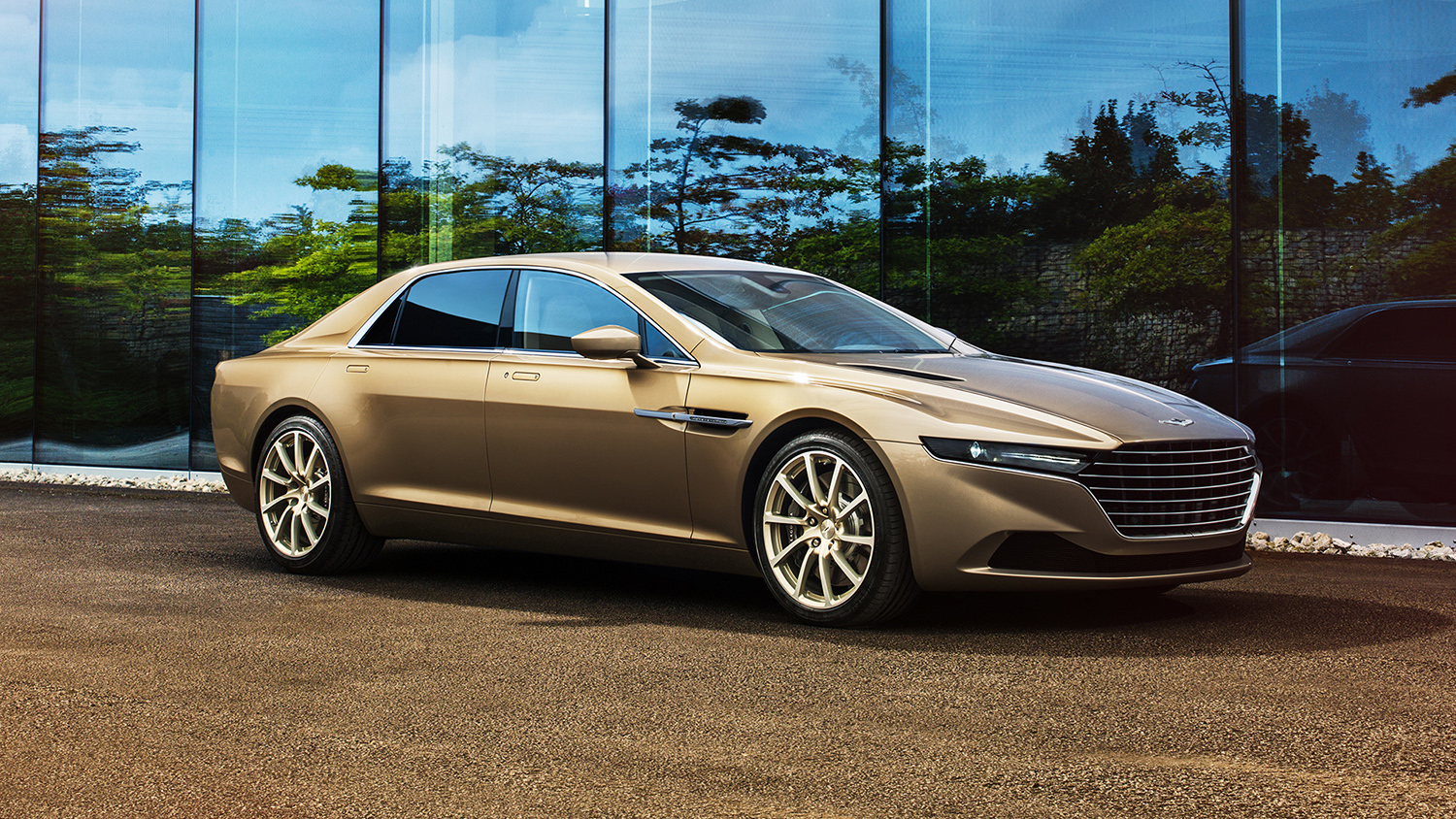
The 7 best sports saloons money can buy
The 7 best sports saloons money can buy
If you need to transport multiple people in comfort and at speed, then you need to get your hands on a sports saloon.
Here, we take a money’s-no-object delve into the world of sports saloons, covering everything from one-off concepts to cars you can buy new today. Keep reading for a guide to the best sports saloons money can buy.
Aston Martin Lagonda Taraf
If you find the Aston Martin Rapide just a little too common for your tastes – they were built in the low thousands after all – then help is at hand in the form of the Lagonda Taraf that was released in the mere hundreds. Or 200 to be exact.
Unlike the Rapide, the Taraf doesn’t look like any other 2000s Aston. It features an extra pair of doors, although ironically it’s built on a stretched Rapide chassis. Its chiselled lines are more concept than road car and you’ll be unsurprised to learn it was originally built for the flamboyant tastes (and large cash reserves) of the Middle Eastern market, although sales were eventually extended to the UK.
And we’re glad they were. Despite being bigger and roomier than the Rapide, the Taraf weighs about the same (just under 2,000kg) thanks to carbon-fibre body panels. Power comes from a proper 6.0-litre V12 that rockets it from 0-62mph in 4.4 seconds. And the price? About £500,000 for an as-new example.
BMW M5 CS
If a BMW M5 is like the bottled essence of a sports saloon, then the CS is its concentrated parfum goodness. Eyebrows were raised when BMW branded its ultimate super saloon the CS – a badge usually reserved for lightweight specials – and whispered that it would cost 50 per cent more than a standard M5.
But then everyone drove it and all was forgotten. Performance is formidable thanks to a lightly tuned version of the standard M5’s 4.4-litre V8 pumping out 635PS (467kW) for 0-62mph in three seconds dead and a 189mph top speed. But it’s the handling that stands out, the CS has expertly judged damping and superb body control that lets you throw it about like a hot hatch.
Factor in its clever selectable four-wheel-drive system and, with prices starting from around £140,000, this could be the best money you’ve ever spent.
Bugatti EB112
If you’re going to buy the ultimate sports saloon, Bugatti – builder of the 305mph Chiron – looks like a solid place to start. The EB112 predates the Chiron and the Veyron, but the DNA in its horseshoe grille design is clear for all to see.
Instead of the W16, under the bonnet you’ll find a 456PS (335kW) 6.0-litre V12 that, with the help of four-wheel drive, gets the big saloon from 0-62mph in 4.3 seconds and onto a 186mph top speed. The motor’s location far behind the front axle means the Bugatti shouldn’t suffer from the nose-heavy antics of other VAG products.
Finding one to buy will be more of an issue – just three cars were ever built and you can expect to pay more than £1million to get your hands on one.
Mercedes 300SEL 6.3
The Mercedes 300SEL 6.3’s combination of subtle looks and prodigious pace saw it nicknamed the ‘hot rod for bankers’ when it was first revealed in 1972, and its badge would go on to inspire a generation of AMG models years later.
As with the new cars, the SEL’s driving experience was dominated by its engine. With 253PS (186kW) and 500Nm (369lb ft) of torque, it still feels quick all these years on – capable of lighting up its tyres in a way that’s quite at odds with the appearance of this regal classic. Tight body control and a pampering ride were made possible by the innovative air suspension.
Sadly, the SEL’s complex mechanicals can throw up some truly horrifying bills, but a budget of over £100,000 will give you the pick of some of the best examples currently available.
Tucker 48
You only have to look at the Tucker 48’s torpedo shape and Cyclops headlight design to know that this is one interesting car. Just 50 were ever produced and their hand built nature means no two cars are the same.
Designed to be fast but also safe, the Tucker offered innovative features like a rollover bar, padded interior and a shatterproof windscreen designed to pop out in an accident. Any doubts that this could claim to be a sports saloon are rebuffed by its rear-mounted helicopter engine. The 5.5-litre flat-six was converted from air to water-cooled and produced up to 150PS (110kW).
Sadly, the Tucker’s rarity, pioneering design and oddball (in a good way) looks mean you can pay well over £1million to add one to your collection.
Ferrari Pinin
Built to celebrate the 50th birthday of Pininfarina, Ferrari’s future (which now includes the Purosangue SUV) could have been very different if it had gone ahead and built the Pinin concept car.
The Pinin has the scrape-your-jaw-off-the-floor styling you would expect of one of the world’s admired styling houses. A flat-12 engine meant its bonnet could be kept as low as possible, while a styling line connected the front to the back, where you found tail lights hidden in the bodywork.
The Pinin never ran but eventually fell into the hands of Ferrari dealer Gabriele Candrini, who recommissioned it for road use. Ferrari’s reluctance to build a saloon may not have been unfounded as the car failed to sell twice at auction, before being snapped up by an American collector.
Chevrolet Corvette four-door
The Chevrolet Corvette has never been what you could call practical but, back in 1980, California Custom Coach had an answer with its four-door Corvette C3. But just five were ever built.
CCC’s concept was 762mm longer than the standard Corvette, freeing up all the room needed for a pair of plushly appointed rear seats, complete with their own T-top roof. Power came from the same 200PS (147kW) 5.7-litre V8 in the standard car although, with an extra 225kg to shift, you can expect performance to be blunted.
But, as sports saloon statements go, the four-door Corvette is hard to beat if you’re willing to stump up the £150,000-plus you’ll need to buy one.
Get an online quote in minutes or call us
Monday to Friday from 09:00 - 19:00
Saturday from 09:00 - 14:00
Sunday from 10:00 - 14:00
or Arrange a call back.
Get an Online Quote Now
Arrange a Call Back
win a year's car insurance
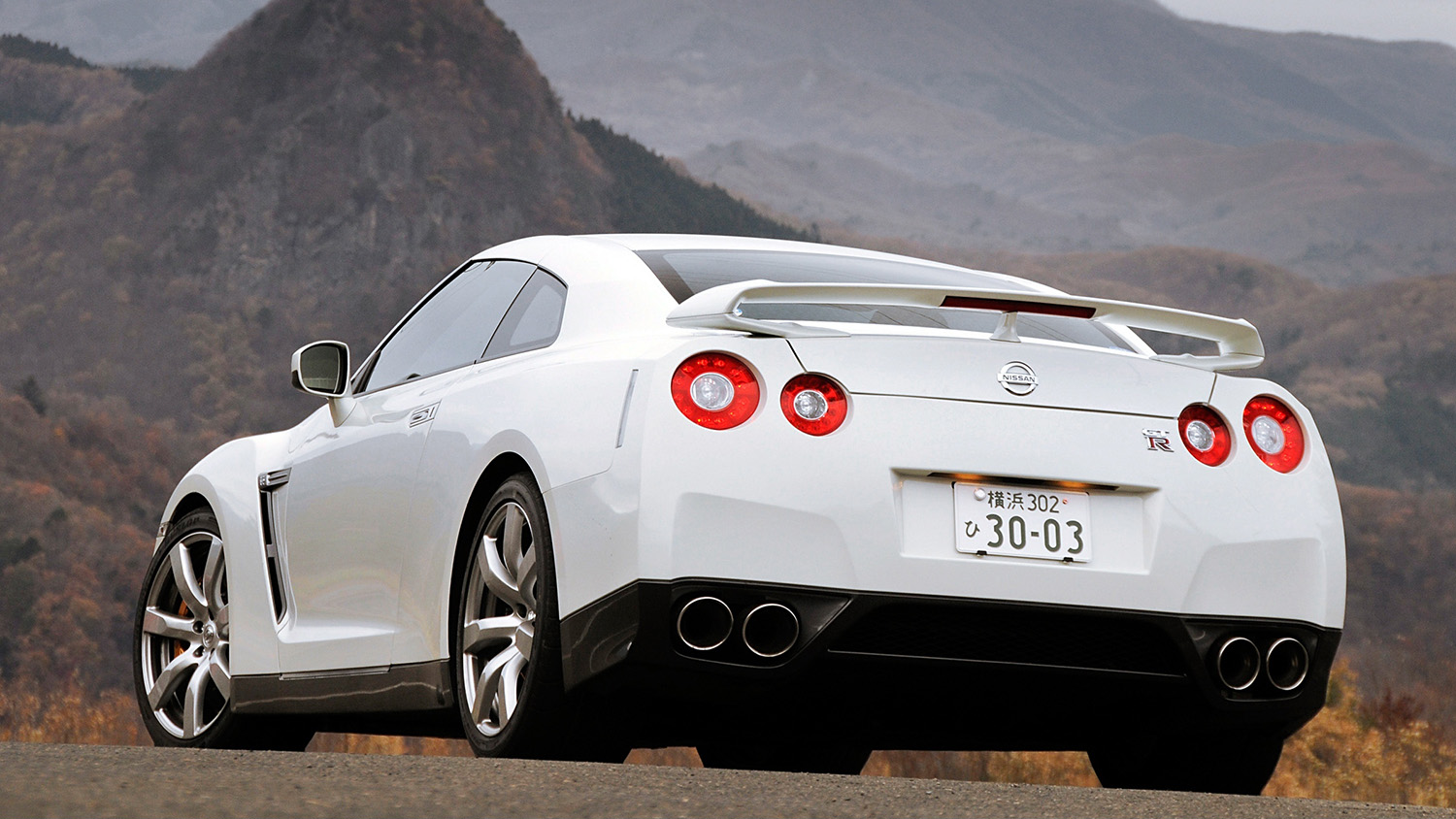
The best sportscars you could buy for £50k
The best sportscars you could buy for £50k
Looking for sportscar thrills on a maximum budget of £50,000? Then buckle up because you’re in for a treat.
We’ve cast semantics aside to give you a choice of sportscars covering everything from relatively practical coupes to less than practical mid-engined two-seaters, high-revving V8s and a four-wheel drive technical tour de force. So keep reading this list of the best eight sportscars available on a budget of £50,000.
BMW E92 M3
The E92 BMW M3 is like a Casio watch with Rolex mechanicals because while it’s one of the more unassuming M3’s on the outside, underneath its internals are pure exotica. Top of the list is a 420PS (309kW) 4.0-litre V8 that positively demands to be revved past 8,000rpm. Competitors’ engines at the time seemed mediaeval by comparison. But as much as the performance and sound of the V8 will impress, the way the M3 handles is just as beguiling. An electronically controlled differential gives the M3 agility a 6.2-litre Mercedes C63 of the time could only dream of and – unlike in the Mercedes – you can also have a manual gearbox. Our budget of £50,000 is plenty to get a late facelifted example with sturdier rod bearings – a famously weak spot on earlier M3s.
Porsche 718 Cayman S
When the Porsche 718 Cayman first went on sale you could have been forgiven for thinking it was a Cayman with its heart cut clean out. Gone was the sonorous flat-six that was so key to the Cayman experience, and in its place was a turbocharged flat-four with, frankly, none of the old engine’s charm. Now though, the unpopular Cayman makes lots of sense. For starters, values have dropped quicker than you’d expect for a depreciation-resistant Porker. Also, while the 718’s turbocharged engine might not drip with character – a simple chip releases north of 430PS (316kW) and a punchy 542Nm (400lb ft). When you consider such a machine would weigh around 150kg less than a GT4 RS and have the fine balance all Cayman’s are famous for, it’s hard to imagine picking up a more accomplished sportscar for less than £40,000.
Jaguar F-Type R
While the Porsche Cayman is like a laser guided missile, the Jaguar F-Type R the nuclear option of the sportscar world thanks to a supercharged 550PS (405kW) 5.0-litre V8 that has more power than you (or indeed the F-Type’s chassis) could ever need. It’ll tail slide at pretty much any speed you care to mention – and some you’d rather not – but there’s a nimbleness to the F-Type that wasn’t present in the XK R that preceded it. Naturally, one of the F-Type’s biggest selling points is long-bonnet-pert-bottom looks that are still fabulous today and make up, in some small part, for an interior that belongs nowhere near a car that could cost north of £100,000 new. At least the 310-litre boot is practical for a two-seater sportscar. What’s more, our £50,000 budget is enough to get you a rear-wheel drive F-Type R in as-new condition.
Alpine A110
Beating the Porsche Cayman at its own game is no mean feat so it’s even more impressive that the Alpine A110 did it in its own particular way. Low weight was key. A chassis and body panels made from aluminium gave the A110 a near-1,000kg kerb weight, meaning Alpine could fit soft suspension that breathed with the road surface and allowed the car’s body movements to work with it in corners. Power comes from a rorty 1.8-litre turbocharged petrol engine – as fitted to the Megane RS – which gave the French flyweight a serious turn of speed, when combined with a dual-clutch transmission that could bash through its gears at a serious lick. Our budget is enough to get you a car that still has the balance of Alpine’s three-year warranty that – when combined with 40mpg fuel economy – makes this brilliant sportscar one of the most sensible options on this list.
Ford Mustang Bullitt
The current Ford Mustang proved to be something of a revolution when it touched down on UK soil back in 2015. It was the first Mustang to officially be sold here in right-hand drive configuration and the first to have independent rear suspension. This was a Mustang that was no longer a leftfield choice and – dare we say – it even handled. Yet despite a 435PS (320kW) V8, it didn’t ooze with the character you might expect of a Stateside V8. That was solved with the Bullitt launched in 2018. A new air filter, exhaust and larger throttle bodies brought power to 460PS (338kW), but more importantly gave the Bullitt a V8 rumble that was worth the money alone, although you also got uprated suspension, steering and brakes. Dark green paint finished the job. Now, this four-seat, big-boot coupe can be yours for as little as £40,000.
Nissan GT-R
On sale in 2007, the Nissan GT-R took everything we knew about sportscars and slung it in the bin. This was a near 1,800kg coupe that could give a Porsche 911 Turbo a merciless pasting off the line and on track. But how? Well, power came from a twin-turbocharged 480PS (353kW) V6, which was transmitted to the road via one of the most sophisticated four-wheel drive systems ever fitted to a road car – one that can grip and slide in equal measure. Inside, the GT-R was a tech fest on wheels, with dials for pretty much every readout you could possibly imagine hidden on the centre infotainment screen. Four seats and a useful boot made up for the fact that, in sportscar terms, the GT-R was hefty. Such is Nissan’s legendary status that price remains strong – even now, you’ll need £45,000 to get in a clean ten-year-old-example.
Alfa Romeo 4C
On paper, the Alfa Romeo 4C sounded like the Alfa we’d all been waiting for. Not only was it a lightweight sportscar with a carbon-fibre tub and a mid-engine layout, it also looked great and had a comically loud exhaust hooked up to its punchy 240PS (177kW) 1.7-litre turbocharged engine. Sadly, the reality of the 4C was also comical. Despite its carbon-fibre, the Alfa weighed more than a Lotus with an aluminium chassis. Meanwhile, the much-hyped unassisted steering that promised a telepathic feel of the road turned out to be terrible, hunting and snatching over cambers and surface changes. Unpleasant at best and plain dangerous at worst. So why include it on this list? Well, tweaking from a brand specialist can have the 4C handling as it should and, with prices starting from a little over £40,000, our budget allows for a touch of complimentary tuning.
Toyota GR86
While the Toyota GT86 was a sublime handling sportscar that brought (pardon the pun) a whole new spin to the sportscar world, it was not without its faults – a strangled engine being the main one. In the GR, Toyota solved this by fitting a 235PS (173kW) 2.4-litre petrol that was quicker but also more liveable – it can make swift progress without being thrashed and the engine’s increased torque makes it easier to manipulate the car’s highly adjustable chassis. In fact, at this price point, it’s hard to imagine a sportscar with a more complete handling balance. What’s more, as the only car on this list available brand new on our £50,000 budget (including a ten-year manufacturer warranty), the Toyota makes a lot of sense. If only the 450 examples destined for the UK hadn’t already sold.
Get an online quote in minutes or call us
Monday to Friday from 09:00 - 19:00
Saturday from 09:00 - 14:00
Sunday from 10:00 - 14:00
or Arrange a call back.
Get an Online Quote Now
Arrange a Call Back
win a year's car insurance
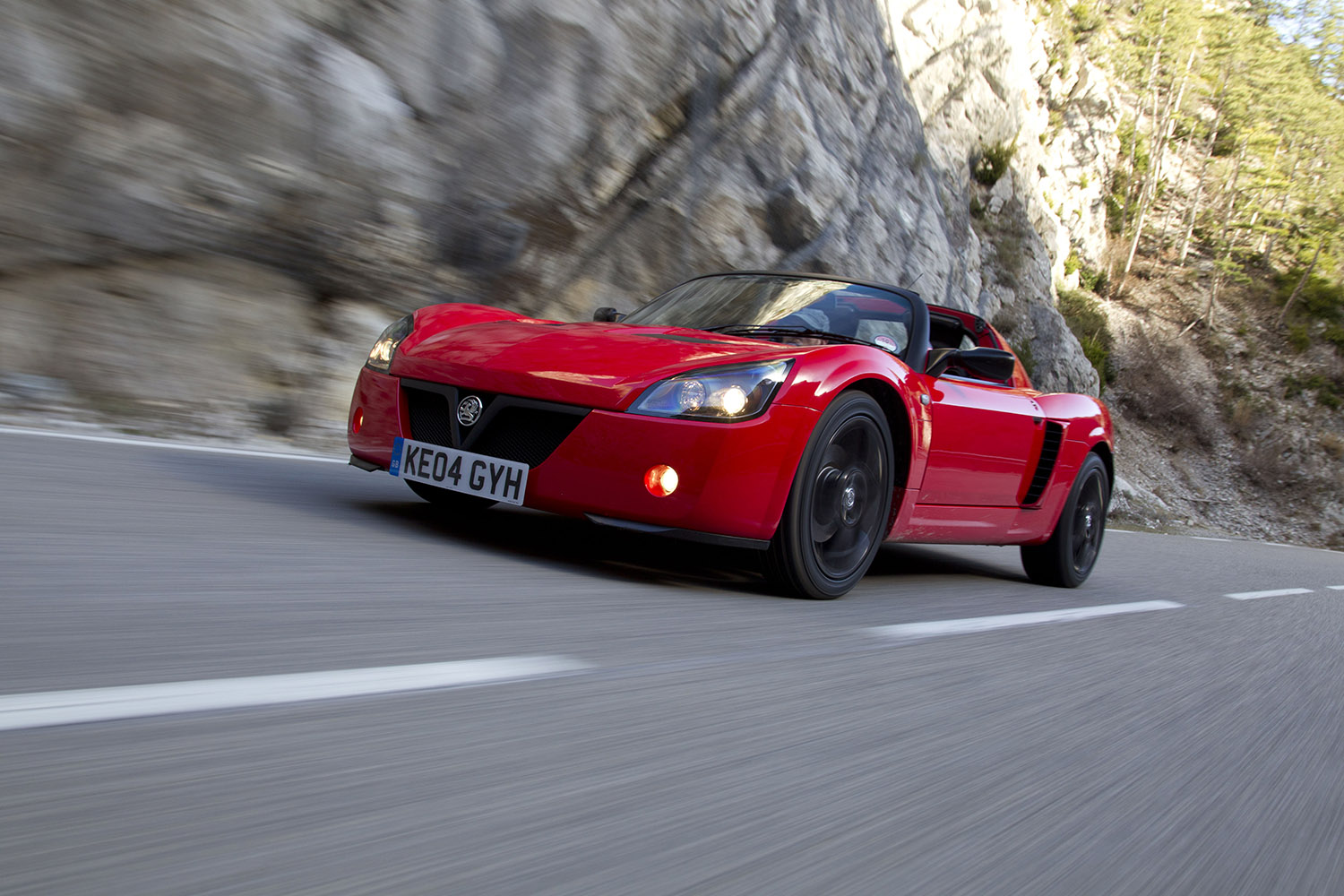
Vauxhall VX220 | Alternative Classics
Vauxhall VX220 | Alternative Classics
The Lotus Elise carved itself a niche as a lightweight British sportscar the committed driver could use every day, but in 2003, there was an even better option; surprisingly, it was a Vauxhall – the VX220 Turbo.
The standard Vauxhall VX220 had been on sale for a couple of years before the Turbo landed – a convenient collaboration that was apparently sparked by Lotus’ need for development in safety and GM’s need for development in ‘sexy’. It was an excellent idea, but with a USP, the Vauxhall could have made a more significant dent in the sales of the better-looking, sweeter-handling and more appealingly badged Elise.
The Turbo’s introduction brought the defining character the VX220 craved. Offering significantly more performance than the standard model, the Turbo was, surprisingly, billed as the softer of the two, with more cosseting suspension and an easily accessible mid-range. That was the theory, at least, but it didn’t entirely live up to the microscope of the car’s launch where journalists – keen to sample the Turbo’s so-called-docile nature – crashed six of them.
They should have known better. With no stability control, a short wheelbase and a mid-engine layout, the standard VX wasn’t immune to stepping out, and the Turbo merely added power oversteer to the mix. But it was indeed quick. Not only did the Turbo have the measure of the S2 Lotus Elise 111S – the fastest sold then – it also dished out beatings to the likes of the Porsche Boxster S and Honda S2000. One (evidently quite brave) Evo correspondent reckoned the Turbo could match a 996 GT3 in the right hands.
While that’s up for debate, what can’t be argued is that VX220 Turbos can now be had for the same price as a basic Lotus Elise, with close to half the horsepower, and it’s this value that remains the Vauxhall’s biggest attraction.
Rarity could be another pull because only around 4500 Turbos were built, with the car’s life coming to an end in style in the form of the mildly tuned VXR220 run of 65 cars, which landed a year before the Vauxhall went out of production in 2004.
Vauxhall VX220: why buy one?
The Vauxhall VX220 Turbo was a performance bargain when new, and the passing of time has enhanced its value.
Key to this boast was its 2.0-litre turbocharged four-cylinder. Its 200PS (147kW) sounds modest by modern standards, but in a car weighing 930kg – or about half the weight of a current BMW M3 – it proved to be plenty, getting the Turbo from 0-62mph in just 4.7 seconds, 0-100mph in 13 seconds and onto a respectable top speed of 151mph.
What explains the Vauxhall’s character even better is that its 250Nm (184lb ft) of torque arrived at just 1,950rpm – compare that to a Lotus Elise 111S with just 174Nm (128lb ft) delivered at a peaky 4,500rpm, and it’s clear where the differences lie.
Vauxhall claimed the VX220 shared just ten per cent of its parts with its Hethel-based brother, but one of those parts was the famous aluminium bonded tub that made the Lotus light and strong.
We understand that every vehicle is unique, which is why our Agreed Valuation policies take the true value of your classic car into account.
Vauxhall then increased the VX220’s wheelbase by 30mm, the car’s rear track by 20mm and added ABS brakes, adjustments that aimed to tame the Lotus’ at-times-challenging on-the-limit handling, with an airbag thrown in case the company’s efforts proved unsuccessful.
Designed to be even easier to live with than the standard car, the Turbo had a softer suspension setup that allowed it to breathe with bumps rather than crash over them; plus, you got a gear-shift-indicator light and a revised instrument cluster.
Touring Pack-optioned cars brought untold luxury in the form of a proper fuel gauge (in place of the annoyingly inaccurate digital readout), extra sound deadening and carpets that make the Turbo more tolerable on long drives.
Even so, it’s hard to argue the VX220 Turbo is practical. A talented gymnast would have trouble elegantly clearing the car’s sills on entry. While taking the roof off helps with access, it’s not easy, taking around a minute to navigate the soft top’s combination of slider, catches and struts before snugly squeezing it into its roof bag.
You do at least get a 206-litre boot with plenty of room for a couple of soft bags, and fuel economy of 33mpg officially – high 20s in reality – is tolerable given the performance.
Vauxhall VX200: Problems to look out for?
The reliability issues that blighted early VX220 Turbos were less forgivable, with reports of suspension problems and engine covers that allowed water to leak into the spark plugs – Vauxhall released a new engine cover to sort out the latter. Seats are also known to work loose from their mountings.
Age brings new problems that previous owners may have yet to iron out. The Vauxhall fibre-glass body is easy to damage, and even a tiny knock requires an entire new clamshell, which will be hard to source. The same goes for head and tail light clusters.
Another prominent weak spot is the roof, never the most watertight; wear and tear means leaks are likely, and a replacement will cost around £1,000, although an aftermarket hardtop will cost roughly half that.
Servicing cost should be reasonably affordable, ranging from £300-750, and the Lotus lightweight means tyres, brake pads and discs will withstand plenty of abuse before needing replacing.
Vauxhall VX220: How much to pay?
Today, you can pick up a used Vauxhall VX220 Turbo for roughly half the price of a well-specified Mazda MX-5, which is impressive considering the gulf in pedigree and performance.
Crash-damaged cars start from less than £12,000 and could be a sensible option for thrashing on track. Adding £6,000 to your budget gives you several low mileage/owner cars to choose from, and as most (if not all) have been modified, it makes sense to pick the vehicle with mods that best suits your tastes. Over £20,000 buys you a mint, bonestock example with a verifiable history that stretches back to when the car’s tyres first hit Tarmac.
Limited-run VXR220s are the most prized of the lot and will set you back £25,000. Arguably, their five-spoke Speedline alloy wheels are with the price hike alone, but they also get more power and torque – up to 219PS (161kW) and 300Nm (221lb ft), respectively – for 0-62mph in 4.2 seconds and a 155mph top speed. Ohlin dampers and smaller wheels – down from 17 to 16-inch – also make these the sweetest handling of the lot.
Get an online quote in minutes or call us
Monday to Friday from 09:00 - 19:00
Saturday from 09:00 - 14:00
Sunday from 10:00 - 14:00
or Arrange a call back.
Get an Online Quote Now
Arrange a Call Back
win a year's car insurance
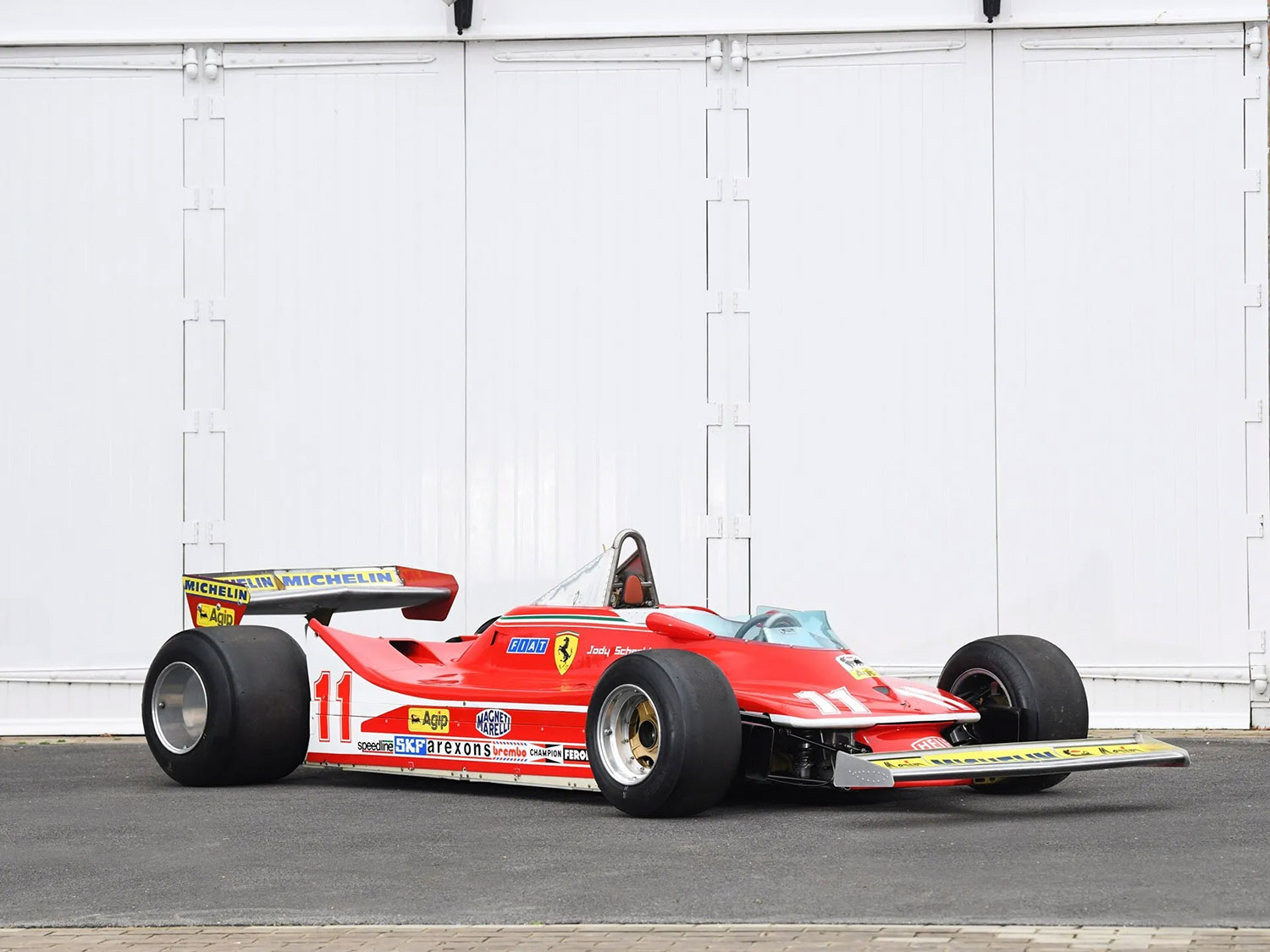
Scheckter Ferrari up for sale in Monaco
Scheckter Ferrari up for sale in Monaco
Jody Scheckter’s 1979 Ferrari 312 T4 will cross the block for an estimated €5,250,000 – €6,500,000 at RM Sotheby’s Monaco sale from 10th to 11th May.
Other highlights include a Kremer Racing Porsche 917, McLaren M23 and a McLaren Elva in a sale studded with motorsport and road car jewels.
The 312 T4 is one of a number of lots from the Jody Scheckter Collection and was Enzo Ferrari’s last F1 drivers’ championship-winning car. It won the Belgian, Monaco and Italian Grands Prix on the way to the constructors’ championship. This very chassis is the one that took the chequered flag at Monza to seal both titles.
Built by famed Italian designer Mauro Foghieri, the 312 was Ferrari’s first ground-effect car powered by a 3.0-litre flat-12 engine.
Bought by Scheckter in 1982, the car comes with its original bill of sale and is beautifully original, with heavily worn seat belts that are a testament to its success in the field. The car raced nine times in 1979 in total and has only ever been driven by Scheckter, including more recently at 2019’s Monza Grand Prix weekend.
We understand that every vehicle is unique, which is why our Agreed Valuation policies take the true value of your classic car into account.
Our next lot – a 1981 Porsche 917 K-81 – can claim similar pedigree to Scheckter’s Ferrari and is estimated to make €3,500,000 – €5,000,000.
In all, the 917 competed in just 23 world championship races, remarkably winning 15 of them before it was rendered ineligible in 1972. From there, the 917 secured consecutive titles in the 1972 and 1973 North American Can-Am Championships.
This particular 917 was built by Kremer Racing 12 years later after Group 6 regulations for the 1981 World Endurance Championship were relaxed. As a result, this car was the last 917 to race at Le Mans, with Bob Wollek, Xavier Lapeyre, and Guy Chasseuil behind the wheel.
Dubbed the 917 K-81, Kremer built the car to make the most of contemporary tyres and aerodynamics and had a Kremer-built aluminium space frame with additional triangulation reinforcement and thicker-gauge tubing to stiffen the chassis.
Nevertheless, short gearing and a draggy rear wing hampered the car’s qualifying run, and it could only manage 18th place on the grid. However, longer gears were installed for the race, with lead driver Wollek climbing to ninth overall. The car was retired after Lapeyre hit a kerb and broke an oil pipe, resulting in catastrophic engine damage.
The car’s second and final outing would prove more fruitful. It led at Brands Hatch during the final round of the 1981 World Endurance Championship – driven by Wollek and Henri Pescarolo – before suspension trouble forced it to retire on lap 52.
Since then, the car has competed in several show events, including the Le Mans Heritage Club Concours at the 2014 Le Mans Classic, where it was awarded the Special Jury Prize.
With a rebuilt engine and a meticulous maintenance record, the Porsche 917 K-81 could be your entry ticket to a host of historic racing events.
Another car with a hefty price tag is this 1973 McLaren M23. Another lot from the Jody Scheckter Collection, it’s expected to fetch between €1,750,000 – €2,250,000.
Thought to be one of McLaren’s best Formula 1 designs, the M23 took the company’s first constructors’ championship in 1973 and two drivers’ championships in 1974 with Emerson Fittipaldi and 1976 with James Hunt.
Peter Revson used this car for much of the 1973 season, taking it to victory at the British Grand Prix. Entered into 63 races, it was part of McLaren’s factory collection before the Scheckter Collection bought it. The car is eligible for historic events, including the Monaco Historic.
Racing cars feature throughout the sale, covering a broad range of disciplines. Our picks include a 1991 Audi V8 quattro DTM car (€750,000 – €1,000,000), a 1998 Roock Racing Porsche 911 GT2 (€750,000 – €1,000,000), and a 1977 Tyrell P34 six-wheeler offered at no reserve.
The road car contingent is no less illustrious, spearheaded by a windscreen-less 2022 McLaren Elva that’s set to make between €1,100,000 and €1,500,000 – someone could make a steal, given that the car was originally bought for €1,515,301 back in 2022.
That’s particularly true as this car is chassis #001 of a production run of just 149 cars and comes with €90,000 worth of custom options, including Jet Black semi-aniline leather with contrast bronze embroidery and piping. One owner from new, it’s covered less than 5 miles.
Billed as McLaren’s most extreme road car – yes, it is a road car – the Elva weighs just 1,269kg and is powered by an 815PS (599kW) twin-turbocharged V8. As a result, it can go from 0-62mph in 2.8 seconds, 0-124mph in 6.8, and if the road rash doesn’t get you first – can hit 203 mph flat out.
That the McLaren makes our next lot – a 2011 Porsche 911 GT2 RS (€315,000 – €350,000), one of Porsche’s most hardcore road machines – look shy and retiring tells you all you need to know. While the GT3 is all about scalpel like finesse, the GT2 is a twin-turbocharged sledgehammer that harks back to a time when 911s had to be handled with kid gloves, and its all the more appealing for it.
Images courtesy of RM Sotheby’s.
Get an online quote in minutes or call us
Monday to Friday from 09:00 - 19:00
Saturday from 09:00 - 14:00
Sunday from 10:00 - 14:00
or Arrange a call back.
Get an Online Quote Now
Arrange a Call Back
win a year's car insurance
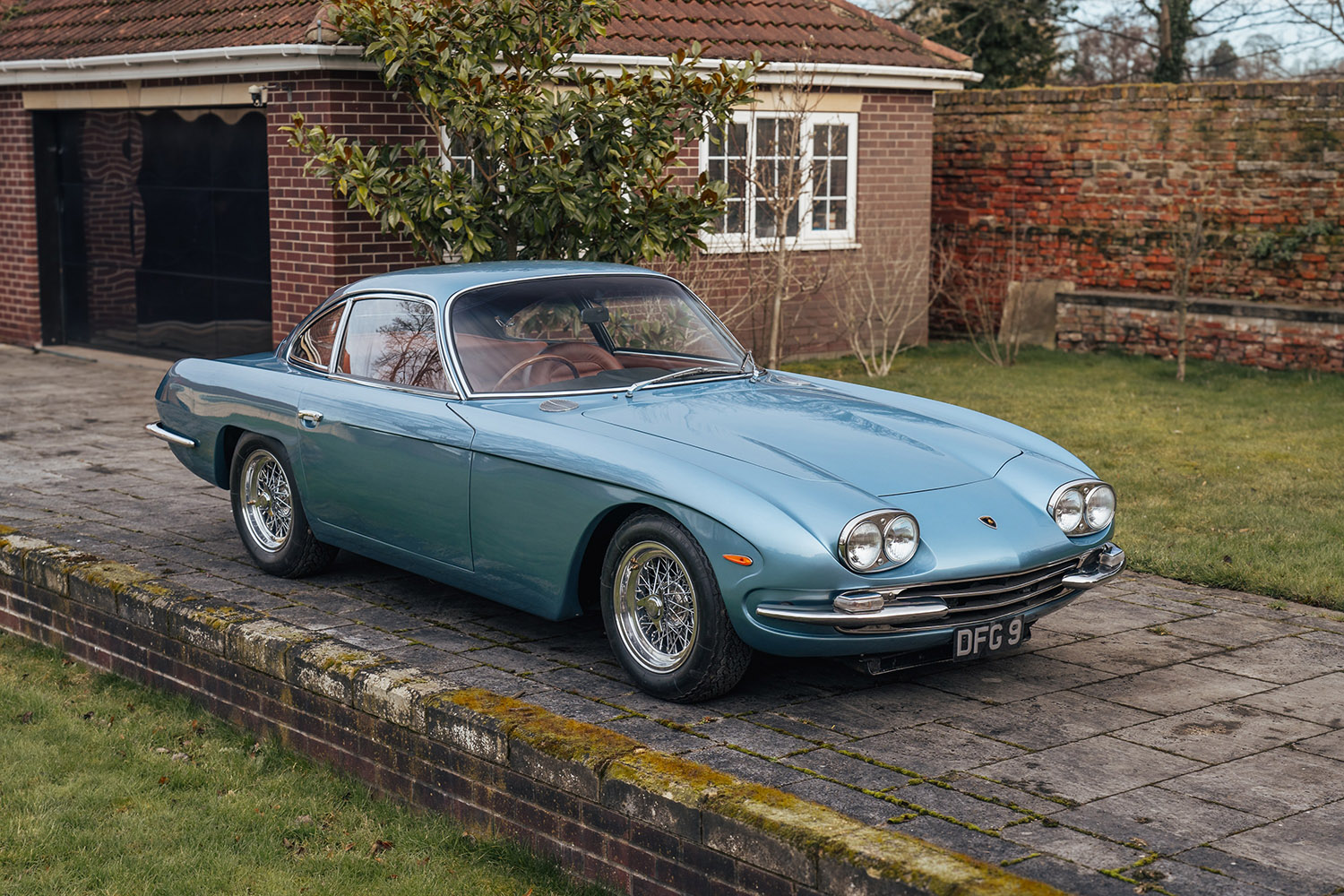
Lamborghini 400GT leads H&H’s Duxford sale
Lamborghini 400GT leads H&H’s Duxford sale
More than 150 classics estimated to be worth in excess of £5 million will cross the block at H&H’s Imperial War Museum’s Duxford sale on 13th March, led by a wonderfully original Lamborghini 400GT with a £550,000 upper estimate.
H&H’s sale has plenty more attainable metal, from a McLaren MP4 12C to a Mazda MX-5 Jasper Conran Edition – here are our picks.
We couldn’t help but start with the frog-eyed Lamborghini 400GT. Understandably, the 400 struggled to grab the limelight from the achingly beautiful Miura launched the same year, but with four seats and a more accessible front-engined balance, the former is undeniably the more usable classic.
Nevertheless, it benefits from the same tech that makes the Miura legendary around these parts. The quad-cam V12 takes centre stage, giving the Lambo 155mph potential and getting it from 0-62mph in less than seven seconds backed by a V12 bark we’d happily trade limbs for.
This particular example is said to be one of the most original RHD cars available. Having been converted from LHD by Hooper & Co prior to the sale, Brian Morgan, grandson of Blackpool Tower designer Paul Morgan, was the car’s original owner.
The car’s history stretches back to 1971 when it was bought by its second owner, construction magnate Ivan Davis Esq. It has covered 27,950 genuine miles and is estimated to fetch between £450,000 and £550,000.
If that’s too rich for your blood (it is ours), then an automatic 1975 Lamborghini Espada offers a similar experience for a more wallet-friendly £80,000 – £100,000.
We understand that every vehicle is unique, which is why our Agreed Valuation policies take the true value of your classic car into account.
A 2012 McLaren MP4 12C, McLaren’s first mass-produced supercar, nicely encapsulates the range of lots available at H&H. With a carbon tub, turbocharged V8, and hydraulic suspension unburdened by anti-roll bars, the 12C blueprints the current line-up and showed Ferrari and Porsche they weren’t going to get it all their own way.
This 12C has covered just 12,500 miles, looks splendid with Graphite Grey paint contrasted by McLaren Orange brake callipers and is estimated to make between £70,000 – £80,000; not bad for such a pivotal car in the company’s history.
H&H’s sale includes everything from fun – a 1968 Ford Ranchero pick-up (£14,000 – £18,000) – to fabulous cars like a 1962 Bentley S2 Continental H.J. Mulliner Coupe (£100,000 – £140,000).
But keen auction goers won’t fail to notice the host of lots offered at no reserve. H&H picks out an MK2 Mazda MX-5 1.8-litre Jasper Conran special edition, one of just 400 made. With good MK1s as rare as hen’s teeth (and probably more expensive), the MK2 offers slightly more refinement and interior space, but much the same joyful driving experience avoiding the numbness of the later MK3. It’s covered just 37,000 miles and has a comprehensive history, although word to the wise – check those chassis legs and sills for rust.
The no-reserve list covers plenty of other delights, including cars like a 1972 Rolls Royce Silver Shadow, two Mercedes SLs – a 1987 R107 300 and a 1996 R129 280 – a 1978 Ferrari Dino and, France’s rare answer to the German executive saloon, a 2002 Renault Avantime.
All in all, the sale serves as a nice contrast to the star-studded auctions that tend to grab headlines.
Get an online quote in minutes or call us
Monday to Friday from 09:00 - 19:00
Saturday from 09:00 - 14:00
Sunday from 10:00 - 14:00
or Arrange a call back.
Get an Online Quote Now
Arrange a Call Back
win a year's car insurance
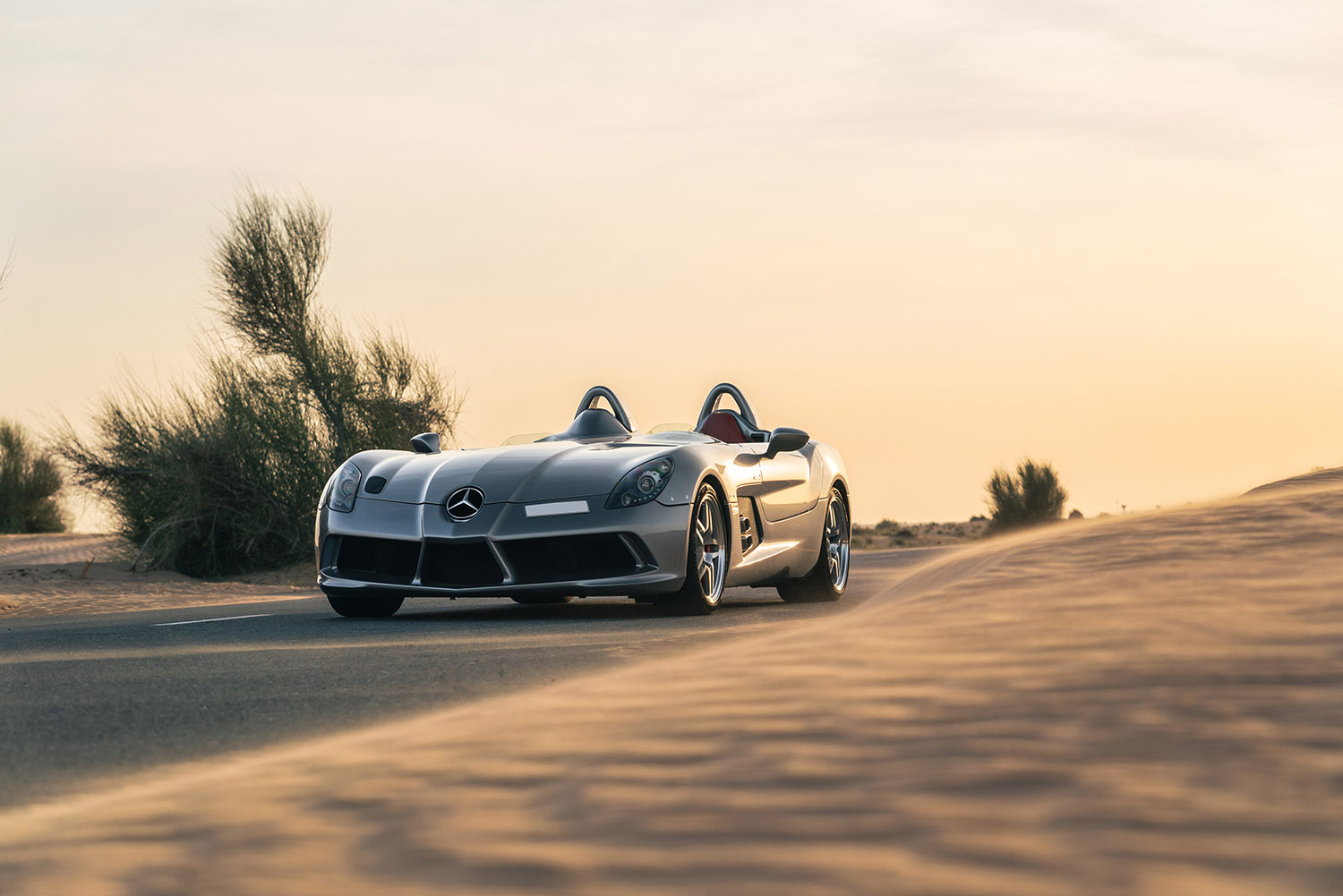
Mercedes SLR McLaren Stirling Moss leads Sotheby’s Dubai sale
Mercedes SLR McLaren Stirling Moss leads Sotheby’s Dubai sale
RM Sotheby’s Dubai auction is headlined by a 2009 Mercedes SLR McLaren Stirling Moss, expected to fetch between £2.4-£2.8million pounds.
Just 75 examples of the SLR were made to celebrate Moss’ 1955 Mille Miglia victory in a Mercedes SLR 300, setting an astonishing 99mph average speed as he went.
Losing the roof not only made the SLR look gorgeous, but it also shaves 200kg in weight and gives your ears front-row access to one of the hypercar world’s most distinctive engine notes with a deep V8 and supercharger backing whine. This example looks close to box fresh. Finished in crystal Antimon Grey over a Black and Anthracite leather interior and delivered new to Luxembourg before it moved to Dubai and has covered less than 10,000 miles since.
The 2016 Koenigsegg Agera RSR up for grabs at the same sale, guided for between £2.2-£2.7 million, is even rarer than the Mercedes – Koenigsegg built just three for the Japanese market. The most subtle of the trio (there’s also a white and a turquoise car), chassis number 7123, has a black exterior with red accents and a black leather interior. This car’s odometer has just ticked past 600 – yes, six hundred – miles.
That is a shame because, with 1,160PS from its twin-turbocharged V8 engine, the Agera has one of the most intoxicating driving experiences, mainly because RSR models get a T-top-opening roof.
The 2014 McLaren P1 set the tone for the modern, hybridised hypercar when it went on sale in 2013. Matching huge performance with an ability to travel silently on electric power for short distances, the P1 was soon joined by the electrified Ferrari LaFerrari and Porsche 918 Spyder. The McLaren’s performance figures are as savage today as they were then, getting from 0-62mph in 2.4 seconds, 0-124mph in 6.8 seconds and onto a 217mph top speed.
Finished in stunning Mercury Red, this P1 is competitively priced (£630,000-£790,000) because to function, it needs a new battery costing nearly £120,000. Gulp.
A Dubai sale wouldn’t be Dubai sales without a coachbuilt car like this Rolls Royce Silver Spectre Shooting Brake by Carat Duchatelet, guided to make £215,000-£255,000.
Offering luxury you and your spaniel can enjoy, the Rolls Royce’s sweeping estate-style roofline comes courtesy of a huge piece of carbon fibre bodywork that sweeps from the A-pillar to the back of the car. It’s even more of a masterpiece on the inside, where the car’s ‘infinity scape’ headlining is supposed to mimic the fading of a distant galaxy.
More than 2,500 man-hours went into the car which was designed by Neils van Roij, the Dutch designer responsible for the Ferrari Breadvan Hommage’ and Range Rover Adventum Coupe’.
This 2018 Mercedes-Maybach G650 Landaulet looks as at home on the dunes as the sand itself and is one of just 99 examples made, guided to cost £550,000-£650,000.
The first 4×4 to wear the Maybach name, this last hurrah to the W463 G Wagon features an elongated wheelbase, an electric fold-back roof and electrically adjustable rear seats. Power comes from a silky smooth 6.0-litre V12, which turbines out 621PS (457kW), not that it’s been used; this car has travelled fewer than 6,000 miles since new.
If the G-Wagon looks at home in the dunes, our final lot, a mid-engine 1985 Renault 5 Turbo 2, would be more suitable on roads closer to home. Stunning in metallic navy blue paint and chrome wheels with gold highlights, the car has covered less than 16,000 miles and is expected to sell for between £80,000 and £95,000.
Cheaper to produce than the original Turbo, the 2 swapped alloy body panels for steel and lost character touches like the original Bertone interior. Critically, though, the 160PS 1.4-litre turbocharged engine stayed producing 160PS (118kW), allowing the Turbo 2 to get from 0-62mph in under seven seconds.
Images courtesy of RM Sotheby’s.
